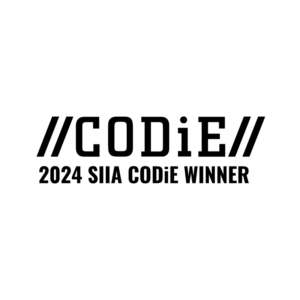April 6, 2017
Introduction
A recent superintendents’ summit in the Lower Hudson Valley of New York focused on digital convergence, which brings together existing district networks, hardware, and software for greater stability and efficiency. My task at this summit was to open a dialogue about instructional convergence, i.e., how teaching and learning can flourish in digital environments. Let’s explore.
Convergence
From the Latin convergere—meaning to incline together—convergence describes a tendency for ideas or objects to meet. This meeting results in a common result or conclusion. For example, when warm and cold ocean currents meet, the warm current rises to maintain the earth’s temperature while the cold current stirs up nutrients to fuel the production of phytoplankton blooms that feed fish and marine mammals. The result is a healthy ocean and the equal distribution of the earth’s temperature. The conclusion is clear: we must cherish our oceans.
Digital convergence
Digital convergence is the tendency for different technologies, media, content, services, and applications to become more similar with time and to become available via a single access point. The most obvious example is your smartphone. With it, you can check the weather in Omaha, read your favorite book, compose a piece of music, get directions, join teleconferences, text an acceptance of your upcoming dental appointment, and even make a phone call. Digital convergence results in increased access to information and resources. The conclusion is yet to be determined as smartphones, depending on the context, have made our lives more connected or less so, more seamless or more complex.
Digital convergence in education
Digital convergence in education brings opportunities and challenges. Greater access to devices opens the door to multiple sources of information as easily as it allows for information and resources that disrupt learning. In other ways, digital convergence holds the potential to alter the balance of power in teaching and learning where tradition holds that the teacher controlled what was learned as well as which resources were used to facilitate that learning. Even considering those challenges, the result of digital convergence in education triggers a move away from pre-determined types of adaptive software to software that is more intuitive and responsive to learners’ prior knowledge, levels of progress, and readiness for learning. The conclusion again relies on context. We recognize that our students enter school connected and ready to learn in that mode; however, we know learning is more than the sum of its parts (information, resources, and mastery, just to name a few).
“In other ways, digital convergence holds the potential to alter the balance of power in teaching and learning where tradition holds that the teacher controlled what was learned as well as which resources were used to facilitate that learning.”

Instructional convergence
We’ve explored convergence as collaborations in nature, technology, and educational technology. Now let’s look at convergence in human interaction. In ophthalmology, convergence is the coordinated turning of the eyes to bear upon a nearpoint. In other words, when you gaze at an object, an ocean, or a person, each eye turns slightly enough to bring focus, and then clarity, to what you see. The focus on a nearpoint brings us to instructional convergence.
Simply stated, instructional convergence is the place where data, learning analytics, and teacher expertise meet.
- Data. With formative assessment processes and skillful use of interim, summative, and curriculum-based data, we learn where students are in the progression of learning and what their next steps are likely to be.
- Learning analytics. Analyzing massive amounts of data helps us understand how to optimize learning and strengthen learning environments (Siemens, 2010). What Kids are Reading, an annual publication from Renaissance, represents learning analytics in action because it answers the following questions and many more: What do students read most often? How much are they reading? Which reading behaviors lead to the greatest growth?
- Teacher expertise. A skilled educator also gauges non-cognitive aspects of learning, such as mindset, commitment to persistence, and sense of belonging (or hope for success) within a discipline. Students with a sense of belonging within a discipline thrive. Those without that sense or hope for success often use phrases such as “I hate reading,” “I don’t need to learn this,” or “I’m just not a math person.”
Like convergence in nature and in electronics, there is a result and a conclusion associated with instructional convergence. The result is informed instruction that leads to greater student outcomes. The conclusion is up to you! Please share your conclusion in the comments below.
References
Renaissance EdWords. (2017). Learning analytics. Retrieved from https://gestest.renaissance.com/edwords/learning-analytics.
Siemens, G. (2010). 1st International Conference on Learning Analytics and Knowledge 2011 call for papers. Retrieved from https://tekri.athabascau.ca/analytics/call-papers.
Interested in more content like this? Explore Renaissance EdWords and stay up-to-date on the most important buzzwords in education today.


